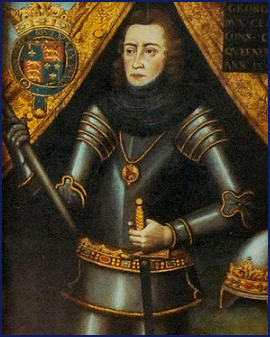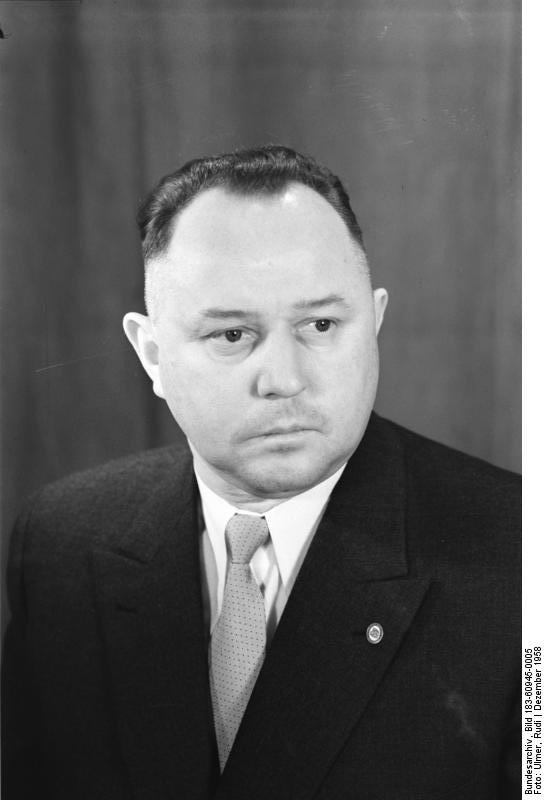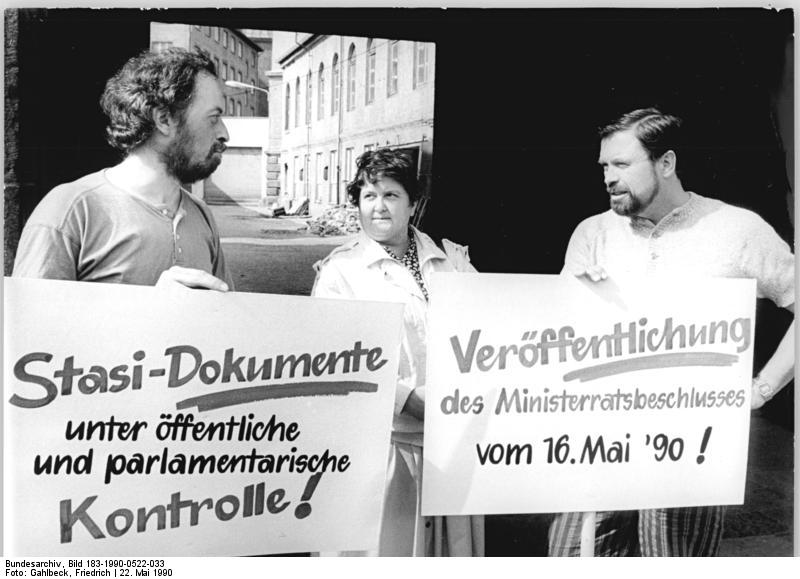This is the third in a series of articles that explores the iconic CIA and its use as a tactical weapon by the US presidents of the Cold War (1947-1991). The Central Intelligence Agency – In the Beginning and The Central Intelligence Agency – Eisenhower and Asia’s Back Door are the preceding posts.
JFK delivering a speech
A very tired John F. Kennedy, the 35th President of the United States, was sworn into office on a clear, windy, brutally cold January 20, 1961.(1) It wasn’t an easy day. Eight inches of snow had fallen the night before, causing a monumental traffic jam. The streets were littered with abandoned vehicles. Former President Herbert Hoover missed the entire inauguration event because Washington National Airport was closed due to the weather. An inauguration is an important national symbol that characterizes the Republic and the all-night effort to clear Pennsylvania Avenue greeted the sun with space to accommodate the large crowd that would gather to witness the duly elected president assume the helm of the ship-of-state.
The snowfall of the previous night and the windy, frigid temperatures of inauguration day are also apt codes for the sea change that had already gathered momentum around the relationship between the new president and his intelligence agency, the CIA. The CIA, as authorized by The National Security Act of 1947, was still fairly young, but Allen Dulles, the Director of Central Intelligence (DCI) was an old hand and seemingly enjoyed the game. By 1961, the CIA, in its short life, had tripped the light fantastic around the globe; Col. Lansdale was merrily fighting rebels in The Philippines following which he ported his obsession with asymmetric guerilla warfare to Vietnam where he spent two-years as a houseguest and confidant of President Diem. Other CIA operatives overthrew governments in Iran and Guatemala, and raised general hell with Cuba and Chile.
During the latter Truman and the Eisenhower administrations there was a trend to combine the Cold War objective of fighting the creep of Communism with business interests. Iran, for example, nationalized British oil interests and Iranian Prime Minister Mohammed Mossadegh refused to budge in spite of punishing sanctions. According to the University of Virginia’s Miller Center, “Eisenhower worried about Mossadegh's willingness to cooperate with Iranian Communists; he also feared that Mossadegh would eventually undermine the power of Shah Mohammed Reza Pahlavi, a staunch anti-Communist partner. In August 1953, the CIA helped overthrow Mossadegh's government and restored the Shah's power. In the aftermath of this covert action, new arrangements gave U.S. corporations an equal share with the British in the Iranian oil industry.”(2)
In Guatemala, Jacobo Arbenz Guzman initiated land reforms that seriously impacted the holdings of the anti-Communist, New Orleans-based United Fruit Company who controlled over forty percent of Guatemala’s arable land. The Truman administration came to the support of American business interests by arming the anti-Arbenz rebels. Under Eisenhower, the CIA finished the job by overthrowing the Arbenz regime and installing Carlos Castillo Armas. Codenamed PBSUCCESS, the coup d'état was the first-ever clandestine military action in Latin America but it was certainly not the last.(3)
Kennedy and the CIA
After fifty years the controversy surrounding Kennedy and the CIA obscures the landscape like the white-out conditions in a blizzard. At one end of the opinion spectrum, Marquette University’s John McAdams’ The Kennedy Assassination site concludes that Kennedy and the CIA had some rough spots but got through them. (4) At the other end of the spectrum is Dr. Jerome R. Corsi, who maintains that Kennedy and the CIA locked horns and never retreated. (5) Excellent research and the documented citations for both perspectives leave the reader with many questions. One corner of this argument does not appear to be disputed; Kennedy consistently refused to use the U.S. military to support private sector interests. In this matter, President Kennedy was a traditionalist. The military, in his opinion, was to be used only in defense of national security interests. If we can escape the white-out conditions of the never-ending controversy, the political landscape, once again, becomes hard and navigable.
As Kennedy came to office, covert CIA actions initiated by the Eisenhower administration were in play in both hemispheres. Two noteworthy examples are the storm clouds that were gathering around the Diem brothers in South Vietnam and the vexing problem of Fidel Castro in Cuba. For discussion purposes I have separated these two significant events, but during the early days of the Kennedy administration they were unfolding concurrently linked through the CIA node.
President Kennedy and DCI Allen Dulles
South Vietnam
South Vietnam was a U.S. government construct, a nation-building exercise illuminated by the Pentagon Papers.
“The United States moved quickly to prevent the unification and to establish South Vietnam as an American sphere. It set up in Saigon as head of the government a former Vietnamese official named Ngo Dinh Diem, who had recently been living in New Jersey, and encouraged him not to hold the scheduled elections for unification. A memo in early 1954 of the Joint Chiefs of Staff said that intelligence estimates showed "a settlement based on free elections would be attended by almost certain loss of the Associated States [Laos, Cambodia, and Vietnam-the three parts of Indochina created by the Geneva Conference] to Communist control." Diem again and again blocked the elections requested by the Vietminh, and with American money and arms his government became more and more firmly established. As the Pentagon Papers put it: "South Viet Nam was essentially the creation of the United States."(6)
By 1961, Southeast Asia was rapidly becoming a tinder box. During a discussion of an Edward Lansdale report on Vietnam with Walt Whitman Rostow, the National Security advisor, Kennedy lamented, “'This is the worst one we've got. You know, Eisenhower never mentioned it. He talked at length about Laos, but never uttered the word Vietnam.” Lansdale’s report brought the deterioration of South Vietnam’s political stability into focus for Kennedy as he remarked to Rostow that the “Lansdale's narrative was 'an extremely vivid and well-written account of a place that was going to hell in a hack.'…” (7)
Diem and his brother persisted in implementing domestic policies based on impressing the Catholic religion and requiring personal loyalties that accelerated the destabilization of the country. The prevailing religion in Vietnam was Buddhism at the time and the Diems were persecuting Buddhists terribly. Making matters worse were two notable supporters of the Diem’s, neither of whom had a clue about the national culture of Vietnam. Senate Majority Leader, Mike Mansfield, a Montana Democrat, lectured in Far Eastern and Latin American history in his previous life. Mansfield was also a practicing Catholic. While Mansfield openly admitted he knew nothing about Vietnam, he very much liked Diem and he was generally considered to be Congress’ resident Vietnam expert. The second big player who knew nothing about Vietnam was Col. Edward Lansdale, a CIA asset who befriended and used the Diems but was only committed to his concept of counterinsurgency warfare. The Pentagon Papers revealed that, based on Lansdale’s advice, Kennedy approved secret operations to "dispatch of agents to North Vietnam" to engage in "sabotage and light harassment”.
Growing involvement
The Diem brothers’ refusal to cease and desist acting on their paranoia, resulted in thousands of Buddhists and dissenters being imprisoned, tortured, and murdered. The Geneva Accords permitted the U.S. to have 685 military advisers in South Vietnam. Eisenhower sent several thousand and, under Kennedy, the figure rose to sixteen thousand with some of them taking part in combat operations. Diem was losing. Most of the South Vietnam countryside was now controlled by local villagers organized by the NLF.(See Footnote 6) It became clear that a new government was necessary if the U.S. was to be effective in keeping Vietnam out of Communist hands. Kennedy authorized the overthrow with the provision that the Diem brothers would be extracted to live in exile.
Henry Cabot Lodge, Ambassador to South Vietnam, received a cable (Cable 243) outlining the issues and actions that were the next steps in changing regimes or bringing the Diem regime into line with American interests, following the midnight raids on the Buddhist Pagodas on August 21, 1963.(8) The Diem brothers would not or could not change direction and South Vietnam’s Diem government was overthrown in a military coup d'état according to play book. What did not go ‘according to plan’ was the murder of the Diem brothers whose desperate calls for rescue went unheeded by the U.S. government that had put them in power. The brutal assassinations of the Diems on November 2, 1963 haunted Kennedy. By November 22, 1963, less than three weeks later, Kennedy himself would die from an assassin’s bullet(s).
“Kennedy learned of the deaths on the following morning when National Security Council staffer Michael Forrestal rushed into the cabinet room with a telegram reporting the Ngô brothers' alleged suicides. According to General Maxwell Taylor, "Kennedy leaped to his feet and rushed from the room with a look of shock and dismay on his face which I had never seen before." Kennedy had planned that Ngô Đình Diệm would be safely exiled and Arthur M. Schlesinger, Jr. recalled that the U.S. president was "somber and shaken". Kennedy later penned a memo, lamenting that the assassination was "particularly abhorrent" and blaming himself for approving Cable 243, which had authorised Lodge to explore coup options in the wake of Nhu's attacks on the Buddhist pagodas. Forrestal said that "It shook him personally ... bothered him as a moral and religious matter. It shook his confidence, I think, in the kind of advice he was getting about South Vietnam." When Kennedy was consoled by a friend who told him he need not feel sorry for the Ngô brothers on the grounds of despotism, Kennedy replied "No. They were in a difficult position. They did the best they could for their country."
Cuba
While the South Vietnam pot was coming to a boil in the Eastern Hemisphere, the Cuban kettle had boiled dry with the Bay of Pigs and was heating up a second time with Operation Mongoose in the Western Hemisphere. Without getting into the ‘why’ of it, presidential candidate John F. Kennedy left the door open to depose Cuba’s new dictator Fidel Castro during the fourth presidential debate.(9) The New York Times the next day ran the story as the lead item on the front page with the headline: "Kennedy Asks Aid for Cuban Rebels to Defeat Castro, Urges Support of Exiles and Fighters for Freedom." James Reston wrote in the Times that "Senator Kennedy (has) made what is probably his worst blunder of the campaign.”(10) After Kennedy was inaugurated, DCI Allen Dulles came calling to cash the Bay of Pigs check and Kennedy approved the invasion as had been planned under the Eisenhower administration except that he refused to commit the U.S. military support.
George Washington University’s National Security Archives Bay of Pigs Chronology provides a wonderfully detailed account of the invasion and reads like a spy thriller. Prior to the invasion factories and cane fields were fire bombed using white phosphorus and other incendiaries, E. Howard Hunt and others made covert trips into Cuba to check the lay of the land, small aircraft overflew Cuba taking pictures and reporting back to the CIA (at least one was shot down by Castro’s forces), communication stations on remote islands were constructed in preparation for command and control of the prospective invasion, and exiled Cubans were trained. The exiles wanted to return home to the country they remembered and American business interests wanted the island playground back in their domain.
The pressure was on to execute the invasion and, in April, about three months after Kennedy’s inauguration the green light was given. “On April 15, 1961, C.I.A. pilots knocked out part of Castro's air force, and were set to finish the job. At the last minute, on April 16, President Kennedy called off the air strikes, but the message did not reach the 1,511 commandos headed for the Bay of Pigs. Three days of fighting destroyed the invading force. A brigade commander sent his final messages: ''We are out of ammo and fighting on the beach. Please send help,'' and: ''In water. Out of ammo. Enemy closing in. Help must arrive in next hour.''(11) The help never came and 1500 Cuban exiles fighters did not come back.
To his credit, President Kennedy assumed full public responsibility for the debacle although he allowed the blame to spread through leaks and rumors. Kennedy fired Allen Dulles and threatened to break the CIA apart. The fiasco that was the Bay of Pigs, however, did not deter the effort to rid the Western Hemisphere of Castro. In November 1961, Operation Mongoose was born with a primary objective to identify mechanisms to get rid of the Cuban leader and the CIA was not the lead player. Robert Kennedy and General Maxwell Taylor were the operation’s overseers. Col. Edward Lansdale was recruited to coordinate activities between the CIA, Defense Department, and State Department.
Operation Mongoose employed intelligence collection, sabotage operations, and identifying and recruiting leaders within Cuba who could overthrow Castro. But there were other methods used. With Lansdale’s obsession on asymmetrical warfare, a subset operation known as the Northwoods operation was developed. This considered using faked and real terrorist activities which could be blamed on Castro and used as a provocation for invasion. It has never been decisively determined whether or not assassination plots were a component of Operation Mongoose.(12) The Church Committee did, however, uncover a 1962 memo from Lansdale to Robert Kennedy claiming that "we might uncork the touchdown play independently of the institutional program we are spurring." Operation Mongoose was ‘officially’ ended in October 1962 with the advent of the Cuban Missile Crisis.
The ‘official’ efforts to ‘get Castro’ fade from the presidential office in October 1962 and go deep underground. The next blip on the ‘get Castro’ radar appears in New Orleans in the rabid anti-Communist, anti-Castro corporate culture at the United Fruit Company upon whose trustee board the fired DCI Allen Dulles sat. The United Fruit Company story must be told at another time, however.
The CIA and Kennedy in perspective
President Kennedy’s fractured relationship with the CIA meant, for his term in office, a reduced CIA influence on foreign policy and affairs. Kennedy, however, did recognize the usefulness of covert operators and plausible deniability’s lack of presidential fingerprints. Publicly Kennedy was shamed twice by CIA failures and fired the powerful Allen Dulles. Did Kennedy really forget and forgive as some analysts portray or would his ego have driven him to keep his promise to break up the CIA? Certainly, Kennedy attempted to dilute the CIA influence during Operation Mongoose. Kennedy’s assassination ended all of the speculation of the CIA’s relative political standing as the status quo quickly returned under the Johnson administration.
The Kennedy administration lasted just 1036 stormy days. His last day, like his first, was preceded by a storm in Dallas, Texas. As on Kennedy’s inauguration day, the storm cleared and Kennedy elected to have his convertible open to the people; the better to relate to the people. That, of course, worked well for the assassin(s). I find it interesting where the ubiquitous Allen Dulles shows up; on the United Fruit Company Board of Trustees and on the Warren Commission investigating the death of the man who fired him. The Diem brothers may have been assassinated but Fidel Castro, the object of so much time and effort, outlived them all.
By Barbara Johnson
Barbara is the owner of www.coldwarwarrior.com, a site about the men and women from all the cold wars who worked so hard for something they believed in and played so hard they forgot the pain.
This article has been published as we approach the 50th anniversary of the assassination of John F Kennedy. We shall be posting about JFK on Twitter and Facebook this week.
To find out more about John F Kennedy’s life, listen to our podcast on him. Click here.
References
1. NOAA’s National Weather Service Forecast Office; Presidential Inaugural Weather; http://www.erh.noaa.gov/lwx/Historic_Events/Inauguration/Inauguration.html
2. University of Virginia; Miller Center; American President: Eisenhower Foreign Policy A Reference Resource; http://millercenter.org/president/eisenhower/essays/biography/5
3. The Cold War Museum; Guatemala 1954; Article 1 of 2; http://www.coldwar.org/articles/50s/guatemala.asp
4. Marquette University; Craig Frizzell and Magen Knuth; Mortal Enemies? Did President Kennedy Plan on Splintering the CIA?; http://mcadams.posc.mu.edu/jfk_cia.htm
5. Dr. Jerome R. Corsi; Who Really Killed Kennedy?: 50 Years Later: Stunning New Revelations About the JFK Assassination; http://www.amazon.com/Really-Killed-Kennedy-Assassination-ebook/dp/B00EMFH0M0/ref=sr_1_1?ie=UTF8&qid=1379766666&sr=8-1&keywords=who+killed+president+kennedy+corsi
6. A People's History Of The United States; Howard Zinn; Chapter 18: The Impossible Victory: Vietnam; http://www.historyisaweapon.com/defcon1/zinnimvivi18.html
7. George Washington University National Security Archives; The Wall; Episode 9; INTERVIEW WITH WALT ROSTOW; http://www2.gwu.edu/~nsarchiv/coldwar/interviews/episode-9/rostow1.html
8. George Washington University National Security Archives; Cable 243; http://www2.gwu.edu/~nsarchiv/NSAEBB/NSAEBB101/vn02.pdf
9. Commission on Presidential Debates; October 21, 1960 Debate Transcript; The Fourth Kennedy-Nixon Presidential Debate; October 21, 1960; http://www.debates.org/index.php?page=october-21-1960-debate-transcript
10. George Washington University National Security Archives; Chapter 3; Into Politics With Kennedy and Johnson; http://www2.gwu.edu/~nsarchiv/NSAEBB/NSAEBB116/cia/Chapter%203%20--%20Into%20Politics%20With%20Kennedy%20and%20Johnson.htm
11. New York Times; TIM WEINER; February 22, 1998; C.I.A. Bares Its Bungling in Report on Bay of Pigs Invasion; http://www.nytimes.com/1998/02/22/world/cia-bares-its-bungling-in-report-on-bay-of-pigs-invasion.html?pagewanted=all&src=pm
12. George Washington University National Security Archives; July 25, 1962; Brig. Gen. Lansdale; Review of Operation Mongoose; http://www2.gwu.edu/~nsarchiv/nsa/cuba_mis_cri/620725%20Review%20of%20Op.%20Mongoose.pdf



















